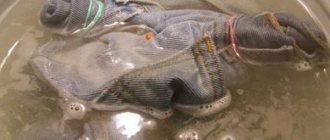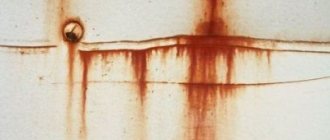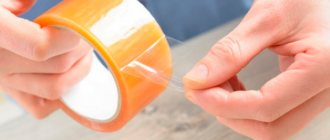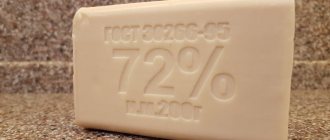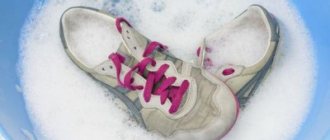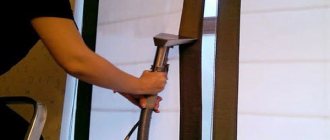At home, plastic turns yellow over time and spots appear on it. This is an inexpensive material, so the housings of kitchen and computer gadgets, hair dryers, electric toothbrushes, and air humidifiers are made from it. It's nice when they are clean and shiny. There are different ways to clean polymer surfaces from contamination.
Why do plastic surfaces turn yellow?
Time is one of the reasons why a plastic product turns yellow . The material ages and is exposed to sunlight and household pollution during operation. Cheap products quickly lose color. When producing the polymer, they save on the coloring pigment (titanium oxide) by adding chalk.
Improper care is the most common reason for the rapid yellowing of polymer objects:
- the object is located near the battery or air conditioner;
- hot water is used to wash the surface;
- the product is regularly splashed with grease and water;
- the item is often exposed to hot steam;
- Strong chemical treatments are used for care.
Features of window whitening
The windows deserve special attention. Plastic structures used in conjunction with glass very often turn yellow under the influence of ultraviolet radiation emitted by the sun. Bright rays can illuminate them all day. If this happens regularly over several years, then the appearance of a yellow tint is inevitable. Additional factors include sudden temperature changes and improper operation.
The plastic used for window elements contains various substances that can extend its service life. Therefore, you should clean the window sill with care. You cannot use:
- Dishwashing detergents;
- Hard sponges;
- Abrasive powders;
- Acetone and similar products;
- Alkaline substances;
- Hot water.
All other means of getting rid of yellow spots can be used without fear.
Preparatory stage
Yellowed plastic can be bleached, but first you just need to wash it with warm water with the addition of liquid soap and washing powder.
It is easier to choose a method for cleaning a product from complex contaminants if a layer of dust has been removed from the surface. If possible, the household device (appliance) should be disassembled and plastic parts removed. They can be soaked in a solution containing active substances, and after treatment, rinse in running water, dry and wipe with a napkin.
Acetone
Not the safest way for you and your plastic.
Before using acetone, test how it reacts with this type of plastic on a small area. If the reaction does not take place and the plastic does not dissolve, then you can safely apply acetone to a cotton pad and wipe the yellowed areas. This method is more suitable for dense and non-bending plastic.
Methods for cleaning plastic
Depending on the type of contamination, the cleaning method is chosen. If the surface is covered with household dust, water and liquid soap are sufficient. It is more difficult to remove stains of grease, soot, and yellowness. But you can also deal with them using folk recipes and household chemicals.
From yellow plaque or fat
You can wash plastic products from greasy deposits using the German drug Reinex. It is suitable for any type of polymer, has a wide range of action, and with its help the surface is cleaned of various contaminants:
- fat;
- rust;
- nicotine plaque.
A product from the Netherlands - HG - is effective against yellowing and dirt stains. It helps get rid of old stains, while preserving the structure of the material, its shine and natural color.
From dirt and grime
Bleaching smoked plastic is not easy. Soot is smeared over the surface and eats into the smallest pores. To reduce cleaning time, you can use these tips:
- walk over the contaminated surface with a vacuum cleaner;
- pour warm water into a basin, add liquid detergent, and use a soft cloth to wash the contaminated surfaces;
- replace the water and rag, wash again, wipe dry with a microfiber cloth.
General cleaning recommendations
Even before starting the whitening procedure, it would be good to take a critical look at the scope of work:
- all surfaces should be washed from dust and possible contamination;
- Soaking works very well, so if possible, remove the items to be cleaned first;
- treat anything that cannot be disconnected on site, but be sure to disconnect the devices from the power supply;
- Only soft rags, sponges and napkins are allowed for use: no brushes, do not use a melamine sponge;
- the water should be warm, but not hot, because it also provokes yellowing;
- Before treating with a cleaner, test it on an inconspicuous area: if no negative effects are identified, then feel free to use it over the entire area;
- Don’t forget about safety: some chemicals are quite aggressive, so gloves, a mask and an open window will not hurt.
An interesting tip: you can remove drops of grease, including from plastic, using a regular eraser. Just rub the stain and it will disappear! In the article lifehacks for the home, we have collected a whole selection of successful tips for you.
Cleaning plastic window sills and frames
During operation, the slopes and window sill on the window are exposed to ultraviolet radiation and temperatures. To keep them in good condition, professional cleaning products are required in liquid, paste and spray form. With their help, it is possible to maintain the whiteness of plastic and remove greasy deposits and stains.
The following drugs received positive reviews from housewives:
- Mister proper;
- Cillit bang;
- Domestos.
Fat and oil leaks
Grease stains on plastic (for example, kitchen surfaces) can be easily removed with simple folk remedies.
1. Wash the contaminated area with a regular soap solution (laundry soap or Fairy dishwashing gel are suitable as active agents), wipe dry.
2. Baking soda will not only clean, but also disinfect. Prepare a paste of baking soda and warm water. Carefully, so as not to damage the plastic, treat the oil mark with a sponge.
3. 9% table vinegar can deal with old fat. Pour it over the dirt and wipe with warm water after 5-10 minutes.
4. Ammonia (10% ammonia) removes absorbed oil well. Prepare a solution (1 tablespoon per liter of warm water), soak a sponge in the mixture, and wipe the stain.
How to restore whiteness to household appliances
You can bleach plastic on a refrigerator that has turned yellow from time or improper care using effective means:
- Unicum. The domestic product removes stains well without leaving streaks. It can be used to treat external and internal surfaces.
- Lighthouse. Another Russian remedy. It is universal and can be used to wash any plastic product.
To restore the whiteness of household items and electronics, you can use the German Nord LAN spray or the domestic product Magic Power Techno.
Factory drugs
You don’t have to take risks with alkalis and acids, but choose a safer alternative – industrial plastic cleaners. They are available in the form of pastes, creams, foams and sprays, promising both high-quality cleaning and subsequent surface protection. Thus, some products are capable of creating a thin protective film on the case with a dust- and water-repellent effect.
Expensive compounds have a polishing effect, removing small scratches, roughness and unevenness. The main thing is to carefully read the instructions before use. The required dosage and cleaning regimen are indicated there.
Interesting:
- How to bleach linen and tulle in a washing machine at home
- What to do if your sneakers turn yellow after washing
- Stains on white sneakers after washing
- Whitening bed linen in an automatic washing machine
- How to place a refrigerator and…
- Tumble dry in washing machine
Reader comments
- Share your opinion - leave a comment
Cleaning products for plastic
Caring for white plastic requires more effort than keeping colored and black household items clean. To remove dirt and preserve whiteness, you need to have special preparations on hand that contain active ingredients.
Important!
Wash glossy surfaces of products with a soft cloth, rough surfaces with a brush.
Folk
Simple folk recipes help with old yellowness. The ingredients for their manufacture can be found in the kitchen, medicine cabinet, and bathroom.
Laundry soap
72% laundry soap helps to wash away dirt and restore the original color. It is produced in solid and liquid form. Add 100 g (ml) of the product to a bowl of warm water. First grate the bar soap or cut it with a knife.
Moisten a cloth (sponge) with soapy water and treat the surface. Rinse off the product after 20 minutes. If darkening remains, the procedure is repeated.
Tooth powder with chalk
To clean plastic from any type of dirt, you can use a mixture of chalk with tooth powder or toothpaste. Crush a piece of chalk to a powder, measure out 1 tbsp. l, pour into a small container.
Add the same amount of teeth cleaning product to it, mix and pour in water while stirring. Apply the resulting paste-like mass to a contaminated (yellowed) surface, rinse off after 10-15 minutes.
Soda and washing powder
The housewife always has washing powder for hand washing or automatic washing, and baking soda.
With their help, it is easy to return the original whiteness to any plastic product. To do this, take equal amounts of bulk products. Add a little warm water to the resulting mixture. Soak a household sponge in a cleaning solution and treat the surface that has lost its whiteness. To achieve the desired effect, wait 6-8 hours, after which rinse the plastic.
Vinegar
Clean and bleach plastic with 80% vinegar essence. Table vinegar (9%) is not suitable. Wear gloves to avoid damaging the skin on your hands. To wet the stains, use medical cotton wool. Apply the product locally to yellowed areas, rub the surface a little, then wash several times with warm water.
Citric acid with chlorine
An anti-yellowing agent that is safe for plastic can be prepared from citric acid crystals (1 hour) and chlorine (1 hour). The mixture should be applied to the surface that has lost its whiteness and washed off after 30 minutes. If after a single application there is no effect, the process can be repeated.
Hydrogen peroxide
A cheap 3% pharmaceutical antiseptic is always available in your home medicine cabinet. It perfectly disinfects small wounds on the skin, copes with household plastic stains, and eliminates yellowness. The pharmaceutical product is usually packaged in small bottles with a narrow neck.
The liquid can be gently squeezed onto the problem area and rubbed in a little with a soft sponge. To obtain the desired result, treat the stains with peroxide several times. At the end of cleaning, wash off the dirt with water.
Perhydrol
To care for plastic, you can use the technical product perhydrol. This is also hydrogen peroxide, but more concentrated. It can be mixed in equal parts with powdered cleaner. For 1 liter of water add 2 tbsp of each. l. Keep the yellowed product in the solution for 1-2 hours, remove it, and rinse with water.
Professional
It is convenient to use ready-made chemicals in the form of sprays. Modern aerosols have a pleasant scent and are easy to apply to a dirty (yellowed) surface. They are easily removed from the polymer surface.
On a note!
Professional products remove static, eliminate unpleasant odors, minor damage (scratches), break down fat deposits, and clean from dust and dirt.
For white plastic you can purchase:
- Armor all profectant;
- Arexons tiefenpfleger;
- Simonis copit cleaner.
Special napkins
In a store that sells computer equipment, you can buy wipes for caring for gadgets. With their help you can remove dirt and plaque from any plastic surface. It's good to have them in the kitchen. They are convenient for removing stains from the body of a toaster, food processor, coffee maker, and multicooker.
Acetone
This remedy can be used, but not often. If used systematically, acetone can damage the structure of the plastic. Wet only heavily contaminated surfaces with solvent and rinse with plenty of water. Open the window during operation.
What is the cause of yellowing?
The loss of plastic's original whiteness may be due to several factors. This is due to improper care of the material and exposure to the environment.
The main causes of yellowing:
Temperature changes. Sudden changes in temperature over time lead to the appearance of microcracks on the surface and destruction of the top layer with the dye included in it.- Burnout. Direct exposure to sunlight is the most common cause of yellowness.
- Wrong choice of cleaning products. First of all, this applies to compositions that are aggressive in their impact.
- Settlement of soot and other pollutants. This problem is typical for products located in the kitchen, in industrial premises or in places with poor ecology.
- Low quality material. Violation of technology in the production of plastic can only manifest itself over time. One of these manifestations is yellowing.
If the surface of the plastic does not have serious integrity violations, it is quite possible to lighten it.
Caring for plastic products
Household appliances and white window frames, when properly cared for, retain a beautiful color and aesthetic appearance. Simple tips will help:
- Wash the plastic regularly with soapy water, use soft sponges, and microfiber cloths to remove excess moisture;
- completely eliminate abrasive products; they remove dirt, but at the same time scratch the surface; with regular use, it becomes covered with scratches in which dirt accumulates;
- do not smoke indoors;
- place fabric or knitted napkins under flower pots;
- after washing with soapy water, treat the surface with polish, the film that forms protects against microdamage;
- remove random stains immediately with any approved preparation;
- protect from direct sunlight.
Special formulations
Today in home departments you can find different types of household chemicals specially designed for treating plastic surfaces.
These include:
- Thick spray;
- Wet wipes;
- Gel compositions.
At the time of processing, chemical compounds have a cleansing effect. In addition, they form a thin film, which helps protect the plastic from further contamination. To maintain a snow-white color, it is recommended to regularly wet surfaces using various chemicals.
These types of cleaners allow you to quickly fix the problem and have a convenient container and dosing system. As a result, it is possible to control the amount of cleaning composition.
However, frequent use will lead to the accumulation of chemical components on the surface of the cookware.
Reviews
Yana, 35 years old
I always have vinegar essence in my kitchen; I use it in winter to whiten windows from gray plaque. The product is inexpensive but effective. I wear gloves and my manicure doesn't suffer.
Andrey, 20 years old
I decided to restore the white color of the printer using Whiteness; it had turned slightly yellow over the years of use. The experiment failed successfully. I washed it off after an hour, the cream color of the body did not turn white.
Evgeniy, 25 years old
To remove the yellowness that appeared over time, I tried different methods. It was only possible to return it with the help of paint. All other options turned out to be ineffective.
The benefits of hydrogen peroxide
This composition is recommended for use to remove fresh stains. To do this, the surface of the sponge is impregnated with a medicinal preparation. Next, they begin to treat the yellowed surfaces.
- The treatment can be carried out several times until the surface becomes white.
- Experts recommend leaving the liquid composition on the yellow surface for 5 hours.
- If there are complex types of contaminants, you can use perhydrol.
Unlike peroxide, this liquid contains 35% active ingredients.

